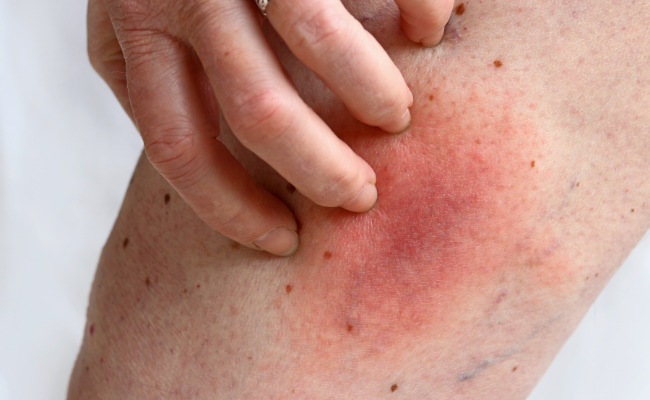How to Treat Rashes?
- October 16, 2023
- No Comments

What are Rashes?
Rashes, a prevalent skin condition, signify a change in skin color or texture. They present as red, itchy, swollen, or irritated patches, originating from diverse causes like allergies, infections, autoimmune disorders, or exposure to irritants. This commonality extends to the manifestation of skin rash as redness, inflammation, and bumps. Some rashes involve dryness and itching, while others bring about pain. The triggers are multifaceted, including viruses, bacteria, allergens, and underlying skin conditions. Recognizing the varied nature of skin rashes is crucial for pinpointing their origins and devising effective treatment strategies.
Why Do Rashes Occur?
The causes of rashes are diverse, ranging from allergies to infections and underlying health conditions. Allergic reactions to certain foods, plants, or medications can trigger rashes. Infections, such as fungal or bacterial infections, may also lead to skin irritation. Autoimmune disorders, like lupus or psoriasis, can cause chronic rashes. Additionally, contact with irritants or changes in the environment may contribute to rash development.
How to Identify and Understand Rashes?
Identifying the cause of a rash is crucial for effective treatment. Rashes can vary widely in appearance and symptoms. Some may present as raised, red bumps, while others may be scaly or blistered. Understanding the specific characteristics of the rash, along with factors like when it first appeared and any potential triggers, can provide valuable information for diagnosis.
Medical professionals, particularly dermatologists, can conduct a thorough examination and, if necessary, order tests such as skin biopsies or allergy tests to determine the underlying cause of the rash.
Treatment Solutions for Rashes:
Topical Treatments:
- Corticosteroid Creams: These creams help reduce inflammation and itching associated with many types of rashes.
- Antifungal Creams: If the rash is caused by a fungal infection, antifungal creams can be effective in eliminating the infection.
- Moisturizers: Keeping the skin well-moisturized can alleviate dryness and prevent further irritation.
Oral Medications:
- Antihistamines: These can be prescribed to relieve itching and allergic reactions associated with rashes.
- Antibiotics: In the case of bacterial infections, oral antibiotics may be necessary to eliminate the infection.
Avoidance of Triggers:
- Identifying and avoiding triggers, such as specific foods, allergens, or irritants, is a crucial aspect of rash management.
Cool Compresses:
- Applying cool compresses to the affected area can provide relief from itching and reduce inflammation.
Phototherapy:
- In some cases, exposure to controlled amounts of ultraviolet (UV) light, under medical supervision, may be recommended for certain types of rashes.
Benefit Points of Treating Rashes:
- Symptom Relief: Effective treatment provides relief from symptoms such as itching, redness, and discomfort associated with rashes.
- Prevention of Complications: Timely intervention helps prevent complications, such as secondary bacterial infections, which can arise from persistent and untreated rashes.
- Improved Skin Health: Treating rashes contributes to overall skin health by addressing underlying issues and promoting healing.
- Enhanced Quality of Life: Managing and treating rashes leads to an improved quality of life, allowing individuals to go about their daily activities without the burden of persistent skin irritation.
- Preventing Recurrence: Identifying and addressing the root cause of the rash helps in preventing its recurrence. This may involve lifestyle changes, avoidance of triggers, and ongoing skin care.
Comments (0)